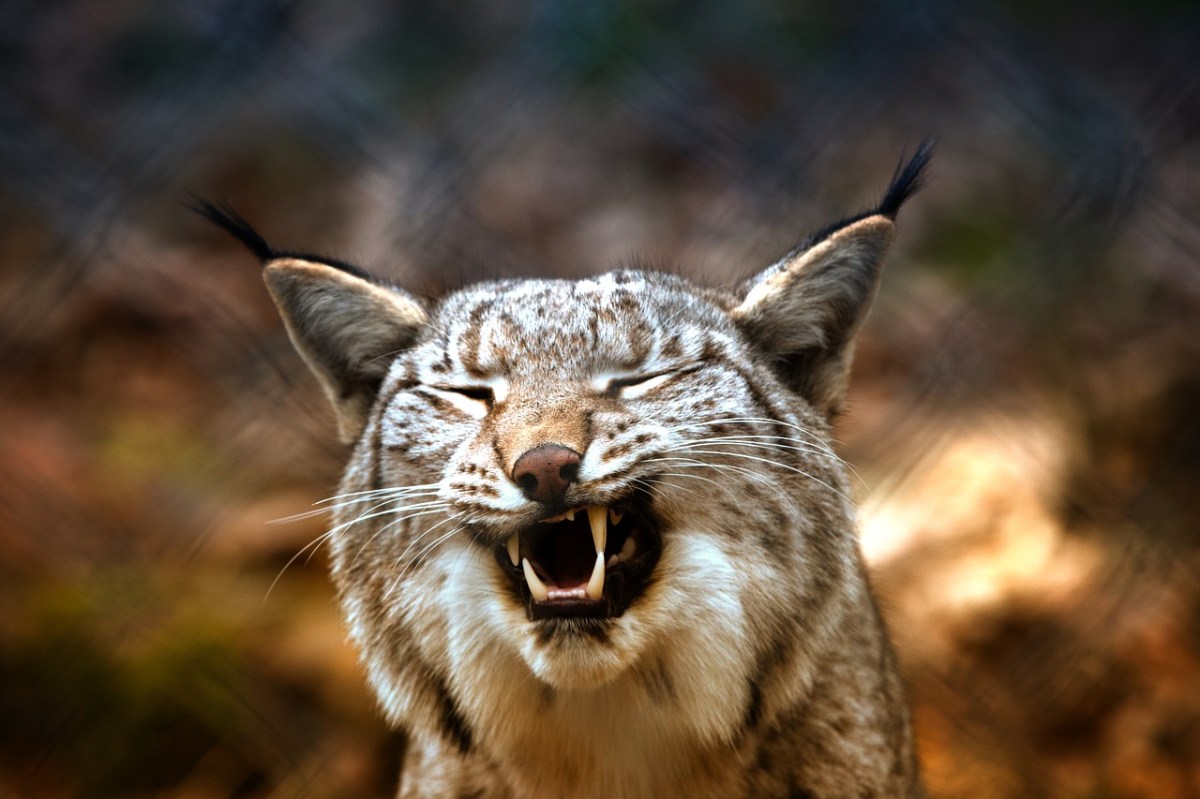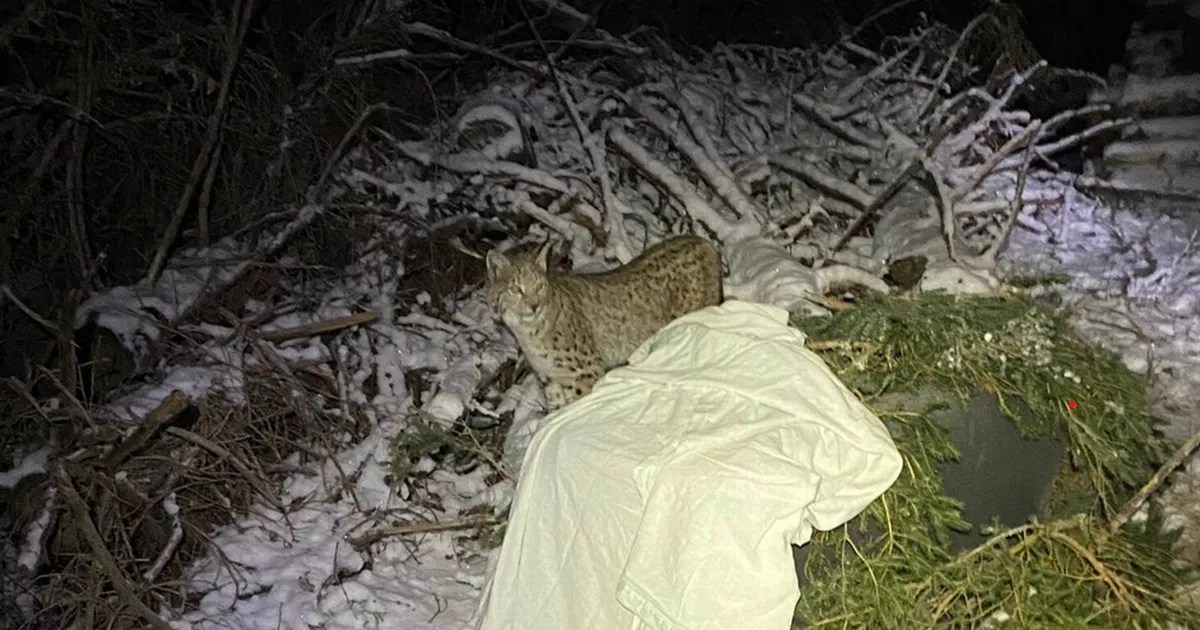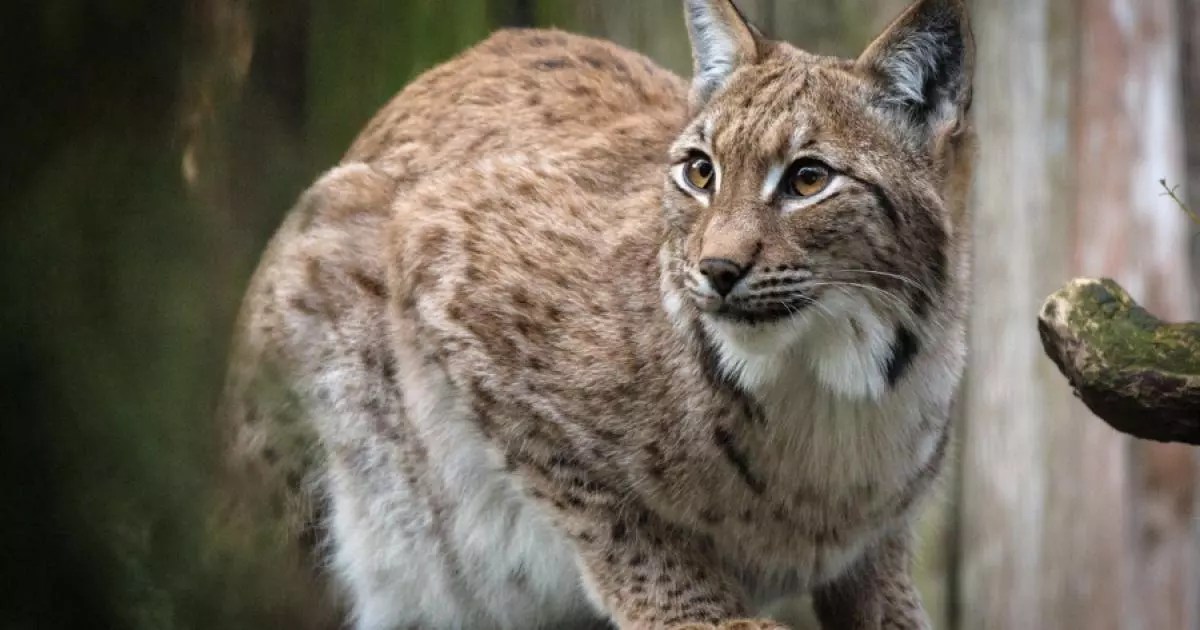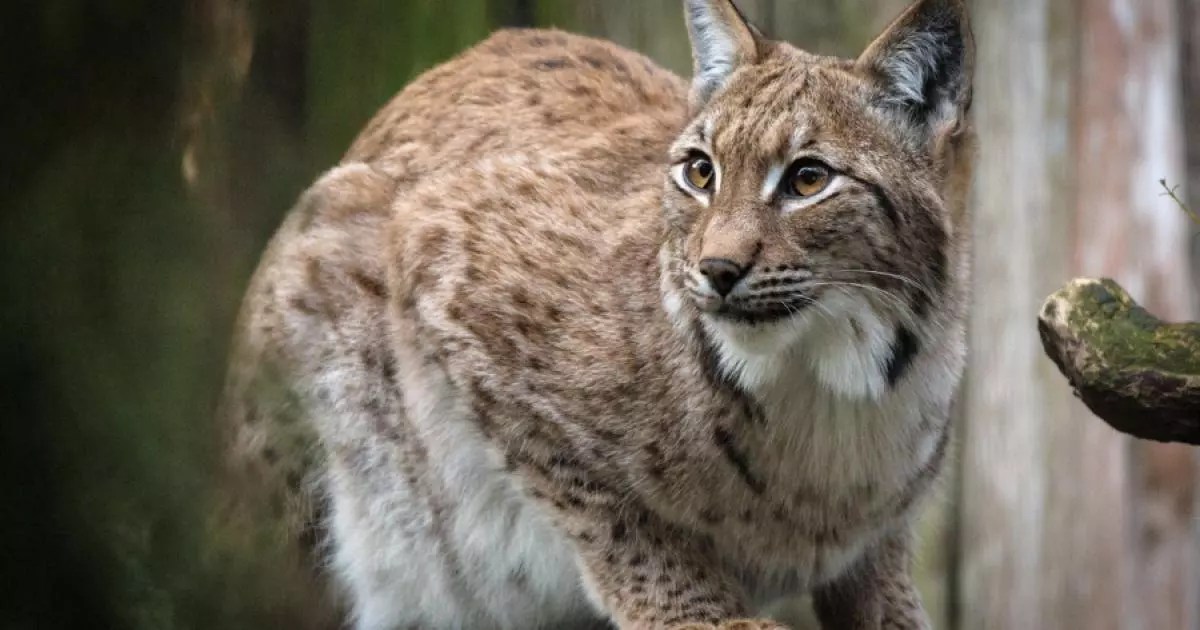Illegally released lynx captured – NatureScot statement – Illegally released lynx captured – NatureScot statement: A wild lynx, illegally released into the Scottish countryside, has been captured. This event sparked a flurry of activity from NatureScot, the Scottish nature agency, prompting investigations and raising concerns about the impact on the local ecosystem and the legal ramifications for those responsible. We’ll delve into NatureScot’s official response, the lynx’s origin, the legal implications, and the wider public reaction to this unusual situation.
NatureScot’s swift response involved tracking and capturing the animal, initiating a full investigation to identify those who released it. The lynx’s species and origin are key to understanding the potential risks to the environment and the reasoning behind the illegal release. The incident also highlights the complexities of balancing conservation efforts with the potential threats posed by human intervention.
NatureScot’s Response to the Illegal Lynx Release
The illegal release of a lynx in Scotland sparked a swift and decisive response from NatureScot, the Scottish nature agency. Their official statement detailed the capture and the subsequent actions taken to address the situation, highlighting the seriousness of the crime and the potential risks involved.
So, that NatureScot statement about the illegally released lynx being captured? It got me thinking about teamwork and dedication. You know, like the commitment shown by Brind’Amour and Berube, as highlighted in this article about their leadership of the Hurricanes: Brind’Amour, Berube share common work ethic leading Hurricanes. Maybe the people who released the lynx could learn a thing or two about responsible action from that kind of dedication.
Anyway, back to the lynx – hopefully, they’ll be safely returned to their habitat soon.
NatureScot’s Official Statement and Actions
NatureScot’s official statement condemned the illegal release, emphasizing the potential dangers to both the lynx and the local ecosystem. The statement Artikeld the agency’s immediate actions, which included the capture of the lynx, a thorough assessment of its health, and an investigation into the circumstances surrounding its release. Further actions included coordinating with relevant partners like police and wildlife experts to identify those responsible and prevent future incidents.
Timeline of Events, Illegally released lynx captured – NatureScot statement
The timeline began with the initial report of a lynx sighting, followed by a period of tracking and monitoring. This led to the eventual capture of the animal. Following the capture, a veterinary assessment was conducted, and then the decision was made regarding the lynx’s future care. The investigation into the release is ongoing, with NatureScot collaborating with law enforcement to gather evidence and identify the perpetrators.
So, the illegally released lynx were captured – a NatureScot statement confirmed it. It got me thinking about the raw power of nature, kind of like the brutal fight for survival shown in ‘American Primeval’ Review: Netflix’s Violent, Bloody Saga Of The , which is a wild ride. The contrast between the carefully managed reintroduction program and the untamed violence on screen is pretty striking, highlighting the complexities of wildlife conservation.
Comparison to Similar Incidents
NatureScot’s response aligns with their approach to similar incidents involving illegally released animals. Previous cases, such as the release of non-native birds or escaped zoo animals, have also involved swift action to capture the animals, assess potential risks, and investigate the responsible parties. The consistency in response demonstrates NatureScot’s commitment to protecting Scotland’s biodiversity and public safety.
The Illegally Released Lynx: Species and Origin

Understanding the species and origin of the illegally released lynx is crucial to assessing the risks and managing the situation effectively. The information below details the species, likely origin, potential risks, and the potential impact on the local ecosystem.
Lynx Species and Origin
While the exact species requires confirmation from NatureScot’s official reports, it is likely to be a Eurasian lynx ( Lynx lynx), given its presence in some captive breeding programs in Europe. Its origin is likely a captive breeding facility, possibly in another European country. The exact program it came from is still under investigation.
Potential Risks and Ecological Impact
Releasing a lynx into an unsuitable environment poses several risks. The lynx might struggle to find adequate food and shelter, leading to starvation or disease. There’s also the risk of conflict with humans or livestock, potentially leading to injury or damage. The introduction of a predator into an established ecosystem could also disrupt the balance of the food web.
Ecological Impact Summary
| Impact Category | Description | Severity | Mitigation Strategy |
|---|---|---|---|
| Predation on native prey | The lynx may prey on native species, potentially impacting their populations. | Moderate to High (depending on prey abundance) | Monitoring prey populations, habitat management |
| Competition with native predators | Competition with existing predators like foxes or red deer could alter the balance of the ecosystem. | Low to Moderate | Continued monitoring of predator populations |
| Disease transmission | The lynx could introduce diseases to the native wildlife. | Moderate | Quarantine and health checks |
| Human-wildlife conflict | Potential for conflicts with livestock or humans. | Low to Moderate (depending on human density) | Public awareness campaigns, livestock protection measures |
Legal and Ethical Implications
The illegal release of the lynx raises significant legal and ethical questions. Understanding the relevant legislation and exploring the ethical dimensions of this event is crucial for future conservation strategies.
Relevant Legislation and Legal Consequences

The illegal release of protected species is a crime under various UK and Scottish laws, including the Wildlife and Countryside Act 1981 and associated regulations. The penalties for such offenses can range from fines to imprisonment, depending on the severity of the crime. Those responsible for the lynx’s release could face significant legal consequences.
Ethical Considerations
The ethical considerations revolve around the welfare of the lynx and the potential impact on the Scottish ecosystem. Releasing a captive animal without proper assessment and planning is ethically questionable, as it exposes both the animal and the environment to unnecessary risks. The capture and subsequent confinement raise further ethical questions regarding animal rights and welfare.
Hypothetical Legal Case Scenario
A hypothetical case might involve charges under the Wildlife and Countryside Act 1981, with the prosecution needing to prove beyond a reasonable doubt that the defendants knowingly released the lynx illegally and that their actions caused potential harm to the environment or the animal itself. The defense might argue negligence rather than intentional harm, leading to a varied range of potential sentences.
Public Perception and Media Coverage: Illegally Released Lynx Captured – NatureScot Statement
Media coverage and public reaction play a significant role in shaping perceptions of wildlife conservation and influencing future policies. The following sections explore how the media framed the story and its implications.
Media Coverage Summary
Initial media reports focused on the novelty of the event – a lynx sighting in Scotland. As details emerged about the illegal release, the narrative shifted to highlight the legal and ecological ramifications. Some outlets emphasized the potential risks, while others focused on the animal’s welfare. Social media saw a mix of reactions, from outrage at the illegal release to concern for the lynx’s well-being.
Public Reaction and Media Framing
Public reaction was largely negative towards the illegal release, with many expressing concern about the potential impact on the ecosystem and the welfare of the lynx. However, some voices expressed sympathy for the animal, emphasizing the need for responsible conservation practices. Different media outlets framed the story differently, some highlighting the legal aspects, others focusing on the ecological implications, and still others emphasizing the animal welfare aspects.
Future Conservation Strategies
Learning from this incident is crucial to improving lynx conservation efforts and preventing future illegal releases. The following recommendations aim to strengthen conservation practices and enhance public engagement.
So, the illegally released lynx were captured – good news from NatureScot! It’s a bit like a football match, you know? Sometimes you have a nail-biting finish, like checking out the Story of the Match | Celtic (A) | Dundee United Football Club for the drama. Anyway, back to the lynx; hopefully, this situation will resolve smoothly and they’ll be safely relocated.
Recommendations for Improved Conservation
- Strengthen regulations and enforcement related to the release of protected species.
- Improve tracking and monitoring systems for captive animals to prevent escapes.
- Enhance public awareness campaigns to educate the public about the importance of wildlife conservation and the potential consequences of illegal activities.
- Invest in research to better understand the ecological impacts of introducing non-native species.
- Develop stronger collaborations between conservation organizations, law enforcement, and the public.
Illustrative Depiction of the Situation
Visualizing the key moments surrounding the incident can enhance understanding of the situation and its implications. The following descriptions aim to provide vivid imagery of the capture, the lynx’s enclosure, and the potential ecological impact.
Capture of the Lynx
The image depicts a team of wildlife specialists in protective gear cautiously approaching the lynx in a wooded area. The lynx, appearing wary but not overtly aggressive, is partially concealed behind a thicket of bushes. The specialists’ expressions are serious and focused, their body language indicating careful planning and a sense of urgency. The surrounding environment is lush and green, typical of the Scottish Highlands, highlighting the contrast between the human intervention and the natural setting.
Lynx in its Enclosure
The image shows the lynx in a spacious, naturalistic enclosure, with plenty of climbing structures and enrichment opportunities. The lynx appears calm and relaxed, its fur sleek and healthy. The enclosure is designed to mimic its natural habitat, with rocks, trees, and vegetation. The overall impression is one of careful consideration for the animal’s well-being.
Potential Ecological Impact
The image depicts a scene where the local ecosystem is altered due to the lynx’s presence. The image shows a field of rabbits, a primary food source, significantly reduced in number. Smaller birds and ground-dwelling mammals also show signs of reduced population. The overall impression is one of disruption to the natural balance, highlighting the consequences of introducing a new predator.
Final Review

The illegal release of the lynx serves as a stark reminder of the challenges faced in wildlife conservation. NatureScot’s response, while swift, underscores the need for improved monitoring, stricter regulations, and increased public awareness to prevent similar incidents. The legal consequences for those involved, combined with the ongoing assessment of ecological impact, will shape future conservation strategies and strengthen efforts to protect Scotland’s unique wildlife.
Answers to Common Questions
What type of lynx was it?
The specific species of lynx needs to be confirmed by NatureScot’s investigation.
What are the potential penalties for illegally releasing a protected animal?
Penalties can range from fines to imprisonment, depending on the severity of the offense and relevant legislation.
How will NatureScot prevent future illegal releases?
NatureScot will likely review current protocols, improve tracking systems, and potentially increase public awareness campaigns.
Was the lynx injured during capture?
NatureScot’s statement will likely address the lynx’s health post-capture.
